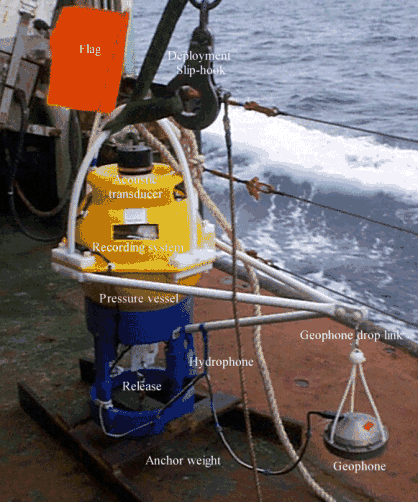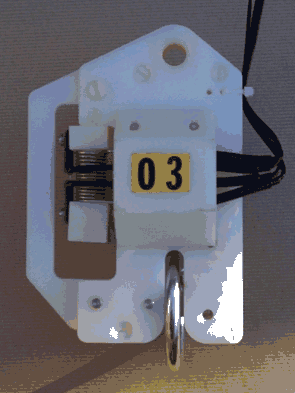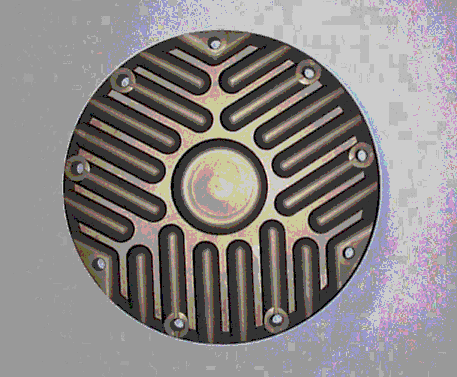
miniDOBS-ES about to be launched from RRS Darwin in 1998

miniDOBS-ES about to be launched from RRS Darwin in 1998
Go to: CARRACK Home Page In this page: Ocean Bottom Seismics | Wide Angle Seismics | miniDOBS Seismometer | miniDOBS specification | Ocean Bottom Release | Geophones
Wide Angle seismics is a technique for investigating the structure of the
Earth's crust using sound waves that are generated either naturally by
earthquakes, or, more commonly by artificial sources. The sound waves are
typically received at distances up to a hundred kilometers or more from the
shot position, having travelled a more or less curved path due to refraction in
the layers of water and rock of different densities. The technique has been
used extensively at sea as an academic research tool for about 35 years, and
in recent years has become an important tool in the armoury of the marine
geophysical exploration companies in their search for oil bearing strata in
progressively more inaccessible structures. The University of Cambridge
Department of Earth Sciences has been involved in wide angle seismics since its
inception (although it was then called Seismic Refraction) and is now involved
in assisting commercial exploration work through Cambridge University Technical
Services Ltd. and Carrack Measurement Technology. The University has a set of
16 miniDOBS which are available when not required for academic research.
Go to: CARRACK Home Page In this page: Ocean Bottom Seismics | Wide Angle Seismics | miniDOBS Seismometer | miniDOBS specification | Ocean Bottom Release | Geophones
The miniDOBS Ocean Bottom Seismometer (OBS) system was developed by Tim Owen and others at the Bullard Laboratories, Department of Earth Sciences, University of Cambridge as a high performance instrument for recording up to 4 components of seismic data for active source or micro-earthquake surveys. In 1997 the Bullard Laboratories built 16 instruments, which were deployed as part of a major experiment on the East Pacific Rise (ARAD) with the Lamont Doherty Earth Observatory and Scripps Institute of Oceanography, La Jolla, California. In 1998 a set of 9 instruments were supplied by the Bullard Laboratories to Instituto de Ciencias de la Tierra "Jaume Almera" in Barcelona (details in Spanish here). As commercial interest in the miniDOBS system has grown beyond the capacity of the University to handle the manufacture, Carrack is undertaking to manufacture and supply parts of the system either directly or for inclusion in systems built by the University. Carrack has been making the 3-component geophone package for several years, and is now manufacturing the mechanical parts of the acoustically actuated release system.
miniDOBS is an autonomous Ocean Bottom Hydrophone and Seismometer recording system (OBH/OBS) designed for operation in a wide range of marine environments from 50 to 6000 m depths. miniDOBS was conceived as a high performance OBS that could be replicated easily so that it could be made and used in large numbers. To achieve this we avoided the use of specially manufactured pressure vessels, or large and heavy commercial release systems and have developed simple, robust alternatives which keep the cost and complexity of manufacture to a minimum. We have not compromised data quality -- miniDOBS uses the same 24 bit data converter chipsets used in commercial streamers to ensure complete data compatibility.
miniDOBS is designed as a system -- as such there is no single configuration that is suitable for all applications, but all components are interchangeable, and are designed to maximise flexibility and minimise cost and the number of different spare parts required. For example, the simplest configuration -- an OBH with a recording duration of up to 20 days -- can be housed in a single 17 inch glass sphere with integral release card, while a four channel miniDOBS with 45 day capacity would require an additional, identical glass sphere to house additional batteries.
Go to: CARRACK Home Page In this page: Ocean Bottom Seismics | Wide Angle Seismics | miniDOBS Seismometer | miniDOBS specification | Ocean Bottom Release | Geophones
The following description applies to the miniDOBS 98 version developed for UGBO-Barcelona. Other specifications are available.
Go to: CARRACK Home Page In this page: Ocean Bottom Seismics | Wide Angle Seismics | miniDOBS Seismometer | miniDOBS specification | Ocean Bottom Release | Geophones
The Ocean Bottom Release system was developed for use with the miniDOBS Ocean Bottom Seismometer described above. The acoustics were developed by Marine Acoustics Ltd to give a versatile, programmable release system together with a telemetric system that allows the exchange of single data bytes between the surface ship and an Ocean Bottom package. This system allows for up to 64,000 different transactions to take place -- enough to implement an effective Quality Control and Control system, allowing instrument status, average noise levels, battery levels etc. to be checked, and recording started, stopped or delayed as required. Using two or three transactions a full time check can be done to establish the clock accuracy of the bottom package to within a few milliseconds. The Release Actuator uses folded lever arrangement fired by electrolysing away a short length of wire and has a safe working load of 100Kg. It does not work in fresh water.

Release Actuator
Go to: CARRACK Home Page In this page: Ocean Bottom Seismics | Wide Angle Seismics | miniDOBS Seismometer | miniDOBS specification | Ocean Bottom Release | Geophones
A compact deployed 3-component geophone package has been developed by the Bullard Laboratories and Carrack to give optimum coupling on flat sedimentary ocean bottoms. The geophone package uses industry standard 4 Hz sensor elements in a hard anodised aluminium body with a depth rating of 6000 m. The geophone is designed to be gravity emplaced after the Ocean Bottom Seismometer has landed on the sea bed. Delayed release can be activated by a small battery powered electrolytic release that drops the geophone at a pre-determined time after deployment, usually from 1 to 2 hours.

Geophone base optimised for shear wave coupling
Go to: CARRACK Home Page In this page: Ocean Bottom Seismics | Wide Angle Seismics | miniDOBS Seismometer | miniDOBS specification | Ocean Bottom Release | Geophones
e-mail: sales@carrack.co.uk